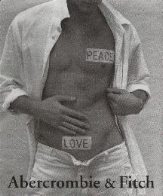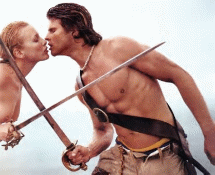Introduction
A company’s brand is currently considered as an important marketing tool, which defines the relations of the consumers toward the company. Accordingly, this can be also true regarding sales volume, profit level, and other financial indicators, which are shareholders’ main objects of interest. However, financial indicators are often merely the consequences, while the causes of success or failure lie in consumer relations, i.e. the strength or the weakness of the brand. Thus, it can be stated that brand management and the issues over its strategy can be related to the competencies of the highest level of management. It can be stated that brand in the fashion industry is an important factor as well, where “[b]randing has become an increasingly important marketing strategy… used to unite all the designed elements of a company, to communicate an image or identity” (Jerrard et al., 2002).
In that regard, identifying and establishing a strong brand for a company in general, and in the fashion industry in particular, are important factors contributing to the failure or the success of the company. In that regard, this paper analyzes brand strategy, in terms of positioning, identity, target market, and their influence by changes in the micro and macro environment, based on the case of Abercrombie & Fitch, “a retailer of casual clothing and accessories” (Fragrance X).
Company overview
The history of Abercrombie & Fitch spans over a hundred years. The company was founded in New York in 1892 under the name David T. Abercrombie Co., as a small waterfront shop and a factory(Fragrance X). The company first specialized in sporting clothes for the upper class. The name of the company changed in 1904 after David Abercrombie partnered with Ezra Fitch, a successful lawyer in Kingston, New York. The founders of the company subsequently resigned from the company, Abercrombie in 1907, and Fitch in 1928. In the period when the company was operated by Fitch, the company started its expansion, introducing several marketing innovations, such as publishing a catalog featuring “456 pages of outdoor gear and clothing as well as sage camping, hunting and fishing advice to 50,000 prospective customers around the world” (Fragrance X). Additionally, the company sponsored famous hunting and exploration expeditions, such as “Theodore Roosevelt’s trips to Africa and the Amazon and Robert Peary’s expedition to the North Pole” (Fragrance X). Focusing mainly on sporting and outdoor outfits, the company changed its direction when it was acquired in 1998 by The Limited, Inc. for about $45 million. The emphasis was put on apparel, where the specialization of the company was put as “selling casual sportswear apparel, including knit and woven shirts, graphic t-shirts, fleece, jeans and woven pants, shirts, sweaters, outwear, personal care products and accessories for men, women and kids” (Abercrombie & Fitch, 2009b). The company was incorporated in 1996, and as of 2008 it operates 1,125 stores in the United States, Canada and the United Kingdom, recording net sales of $3, 54 billion and employing 83 thousand employees (Abercrombie & Fitch, 2009c).
Identification of the brand
Defining a brand, it can be stated that a brand is not a trade mark and not even a product. A brand is an integral, unique and attractive image, intrinsic to the trade mark, which is able to spread to products and service, which are united by the attachment to such trade mark. Branding is built on the adherence to one or more of people’s personal values, and their representation of what is fashionable, modern, prestigious, etc. Every person possibly has thousands of such ratings, and the purpose of the brand is to identify and comply with those important in the context of consuming, and actual for a specific market or product category.
In that regard, it can be stated that in essence the product is hardly can be prestigious or have value characteristic on its own. Thus, the identity of a brand is controllable elements such as “core essence, positioning, brand name, tag line, logo, messaging, and experience. In terms of Abercrombie & Fitch, it cannot be stated that their products can differ greatly from other brands. The differences are very slight, and can hardly be decisive when making a purchase. The main difference lies in the aforementioned elements which contributed to the creation of the identity that can be currently recognized.
The identification of the current brand identity of Abercrombie & Fitch can be achieved through the strategy used to create the brand value. In that regard, the elements of the strategy might include the following elements:
- The target audience
- The message of the brand
- The lasting impression
Accordingly, the strategy includes the means through which the aforementioned steps can be implemented. Taking the target audience for instance, the resources that identify their target audience can be seen through the images of the models used in their advertisements, i.e. 18-22 college students. The images themselves are important communication devices, where the symbols that they reflect can be used to determine several factors, among which are:
- Cultural determinants – urban life style with an emphasis on outdoor activities.
- Social – single and non-married couples
- Personal- 18-22 of age; students with sources of income.
- Psychological – “sexy and edgy” attitudes (Brill, 2007).
The last point was seen in A&F Quarterly, a regularly published catalog, which was abandoned due to its featuring sexual images with semi-nude models. The emphasis on the psychological factor in brand identity was evident in the catalog, as of the 280 page catalog, “, more than 120 pages represent these sexual images, while only 104 pages are actually devoted to selling clothing” (Men Stuff, 2010) (see figure 1 ).


It should be stated that despite abandoning the publication, the pictures and the models used I the advertisements remain of sexual nature, although not explicitly represented (see figure 2).

The resources that help identify the message of the brand can be seen in the verbal identity of the brand, which consists of “anything that can be spoken or articulated in print” (Perry and Wisnom, 2003). “A name, a descriptor, a positioning tag line, and copy points for a brochure or sales sheet are all core components of a verbal identity” (Perry and Wisnom, 2003). Such messages can be seen through the tag lines on the photos of the advertisement, as well as on the texts that can be seen on various websites. In terms of the latter, the brand’s identity can be also reflected through the company’s initiative in registering an account on Face Book, a popular website for social networking (Abercrombie & Fitch, 2009a). Thus, the message and the target audience can be visible through the mission of such page, using such words as “hang out and have fun”, publishing the experiences of the models, and the main announcements of the company (Abercrombie & Fitch, 2009a). In that regard, the identity of the brand conforms to the aforementioned elements in target audience, in terms of age, social factors and psychology. It should be stated that using the internet, social networking, and “texting” is no longer a specific characteristic, as such factors are prevailing in the aforementioned category, and thus, it should not be necessarily separated.
Changes in the environment
The environment changes can be defined as all the elements that surround and impact the organization. Although the key perspectives that impact that marketing environment consist of three elements, i.e. micro environment, macro environment, and the internal environment, only micro and macro environment will be covered within the scope of this paper.
Macro environment changes. The macro environment can be defined as “all factors that can influence and organization, but that are out of their direct control” (2010). The categories of the factors can be seen through PEST analysis (political, economic, socio cultural and technological factors). The most obvious factors that are likely influencing the brand image can be related to the category of economic and socio cultural factors.
Sociocultural changes can be seen through the changes in the trends of creating tween stars. In that regard, such change can be related to the shift from sporting and outdoor outfit toward the apparel industry, where “Hollywood has refined the star-making machinery and has everything in place to offer the chosen icon a shortcut to global popularity” (Lindstrum et al., 2004). Additionally, the rise of girl and boy bands was a factor that influenced the changes in clothes being more than simply functional devices. Thus, wearing specific clothes has become more than just wearing a convenient clothes, but a possibility to touch on a lifestyle heavily promoted in the media. If taking a historical glimpse, sociocultural changes with a political influence were related to the Vietnam War and the protests held against the war, after which the warehouse sale conducted by the company was met with a huge success (Funding Universe, 2009).
The economic changes are common factors that influences most companies, and not tied to Abercrombie & Fitch specifically. In that regard, the most recent changes can be seen in the economic recession, which is likely to negatively affect the company. The latter is specifically evident in the company’s selected pricing policy, in which the products of the company were historically an attribute of upscale malls. Thus, combining the recession with the company’s “unwillingness to compromise on price” (WATSON, 2009) is likely to influence the company’s brand identity either in losing their target audience, or changing their pricing policy, with subsequent brand repositioning. The latter is currently avoided, as the company claims “that sales and discounts would “cheapen” the brand” (WATSON, 2009). In that regard, the refusal of changing in accordance to economic factors will nevertheless lead to changes in brand identity, which can be seen in the following section on brand positioning.
Micro environment changes. The micro environment can be defined as the factors that directly influence the company. These factors describe the relationship between the companies and the driving forces that control these relationships, with the company having a degree of influence over this environment. The factors include consumers, suppliers, competitors, and stakeholders (2010). The main factor among the aforementioned is consumers, as consumers are the focus of marketing, which activities are directed toward satisfying their needs. The changes in the needs of the consumers can be seen as the most influential factors that might lead to changes in brand identity. In that regard, the main consumer need to which Abercrombie & Fitch conform is the need for recognition and identification. Consumers express themselves through choosing a particular brand, thus, the brand of Abercrombie & Fitch uses its marketing strategy to build a brand identity that promotes fulfilling such need of customers.
The role of the competition can be also considered as important in changing the brand identity. Such factor in the micro environment can be related to the changes in the economy, which were previously mentioned. In that regard, at the time of recession, the main competitors of Abercrombie & Fitch changed their policies, where “high-end retailers from Saks to Coach to Barneys have offered big discounts, developed cheaper brand lines, and opened outlet stores” (WATSON, 2009). In turn, such changes in competition can influence the brand identity of Abercrombie & Fitch.
Market position
The market position of Abercrombie & Fitch is the company’s position in relation to its competitors. In that regard, the market position of the company changed over the years with the changes in their specialization. In that regard, the position that remained regardless of the specialization is its upscale positioning. In that regard, it can be stated that the company is positioned as the leader of the industry of high end consumer clothing. The position in the market is highly connected to the brand identity created by the company, which implies higher prices for a distinguishable brand.
Brand position
The positioning of the brand can be represented through the fact that the company’s brand was identified as a synonym of teen culture. In 2000 the company was ranked as “the sixth coolest brand… passing Levi’s and Nintendo –according to a recent [Teenage Research Unlimited] TRU survey” (Perman and Reynoldsburg, 2000). In that regard, the brand positioning of Abercrombie & Fitch can be defined as the perception of the brand in the minds of its target consumers, i.e. being sexy, edgy college students, distinguishable among the others. Accordingly, maintaining the prices of the company’s products is part of the brand value, which is the reason for the company refusing to change its price policy in the recession. Nevertheless, the refusal of conforming to the new economic realities might lead to that the brand identity might be repositioned into other segments of the market.
Additionally, it should be noted that brand positioning as affected by the micro environment, most notably consumers, where a wave of criticism over the brand resulted in changes in the perception of the company. The latter is specifically concerned with racial aspects regarding the imageries used in advertisement. In that regard, there is even a book titled Why I Hate Abercrombie & Fitch, in which a collection of essays was devoted to analyzing race and sexuality in the company’s brand identity. Much of the controversy was attributed to A&F Quarterly, which is regarded as contributing to the creation of a brand associated with “ a young, white, upper-class, leisure lifestyle” (McBride, 2005). Thus it can be understood that the source of controversy was coming from specifying white in particular. In conformance to such controversy, it can be seen that the company repositioned her brand image, and even released a statement on diversity, in which it acknowledges the commitment to diversity.
Target market
The controversy surrounding A&F Quarterly was also related to changing the demographics of the target audience of Abercrombie & Fitch. Initially, the target audience of the company was directed toward positioning the brand as a teen brand. In that regard, despite the fact that the catalog is not published anymore, the company’s target audience is enforced on the lower age limit of 18, mainly due to the promotion of sexuality, although not in an explicit from as in A&F Quarterly. In that regard, by 1999, “Abercrombie & Fitch had become the largest tween retailer” (Lindstrum et al., 2004). Thus, the change in the age group can be largely contributed to changes in the micro environment as well.
Conclusion
In conclusion, it should be stated that brand identity is an essential element of marketing. With the rise of identical products the company had to identify their products with virtual aspects. Accordingly, brand identity facilitates the selection process among the similar products, sending clear messages of what to expect from a particular product. In the case of Abercrombie & Fitch, the company succeeded in creating a distinguishable brand identity, which corresponded to the personal values of the target audience.
References
2010. The Marketing Environment. Marketing Teacher Ltd. Web.
ABERCROMBIE & FITCH. 2009a. Abercrombie & Fitch FaceBook Page. Web.
ABERCROMBIE & FITCH. 2009b. Abercrombie & Fitch Home Page. Web.
ABERCROMBIE & FITCH. 2009c. Abercrombie & Fitch: 2008 Annual Report. Web.
BRILL, M. 2007. Abercombie & Fitch Apparel Is A Natural Fit For Europe. Web.
FRAGRANCE X. History and background of Abercrombie & Fitch. AOL Inc. 2010. Web.
FUNDING UNIVERSE. 2009. Abercrombie & Fitch Co. Web.
JERRARD, B., HANDS, D. & INGRAM, J. 2002. Design management case studies, London; New York, Routledge.
LINDSTRUM, M., SEYBOLD, P. B. & MILLWARD BROWN (FIRM). 2004. Brandchild: remarkable insights into the minds of today’s global kids and their relationships with brands, London; Sterling, Va., Kogan Page.
MCBRIDE, D. A. 2005. Why I hate Abercrombie & Fitch: essays on race and sexuality, New York, New York University.
MEN STUFF. 2010. Clothing catalog or pornography? Web.
PERMAN, S. & REYNOLDSBURG. 2000. Abercrombie’s Beefcake Brigade. Web.
PERRY, A. & WISNOM, D. 2003. Before the brand : creating the unique DNA of an enduring brand identity, New York, McGraw-Hill.
WATSON, B. 2009. Abercrombie and Fitch: The biggest brand loser of the recession. AOL Inc. Web.